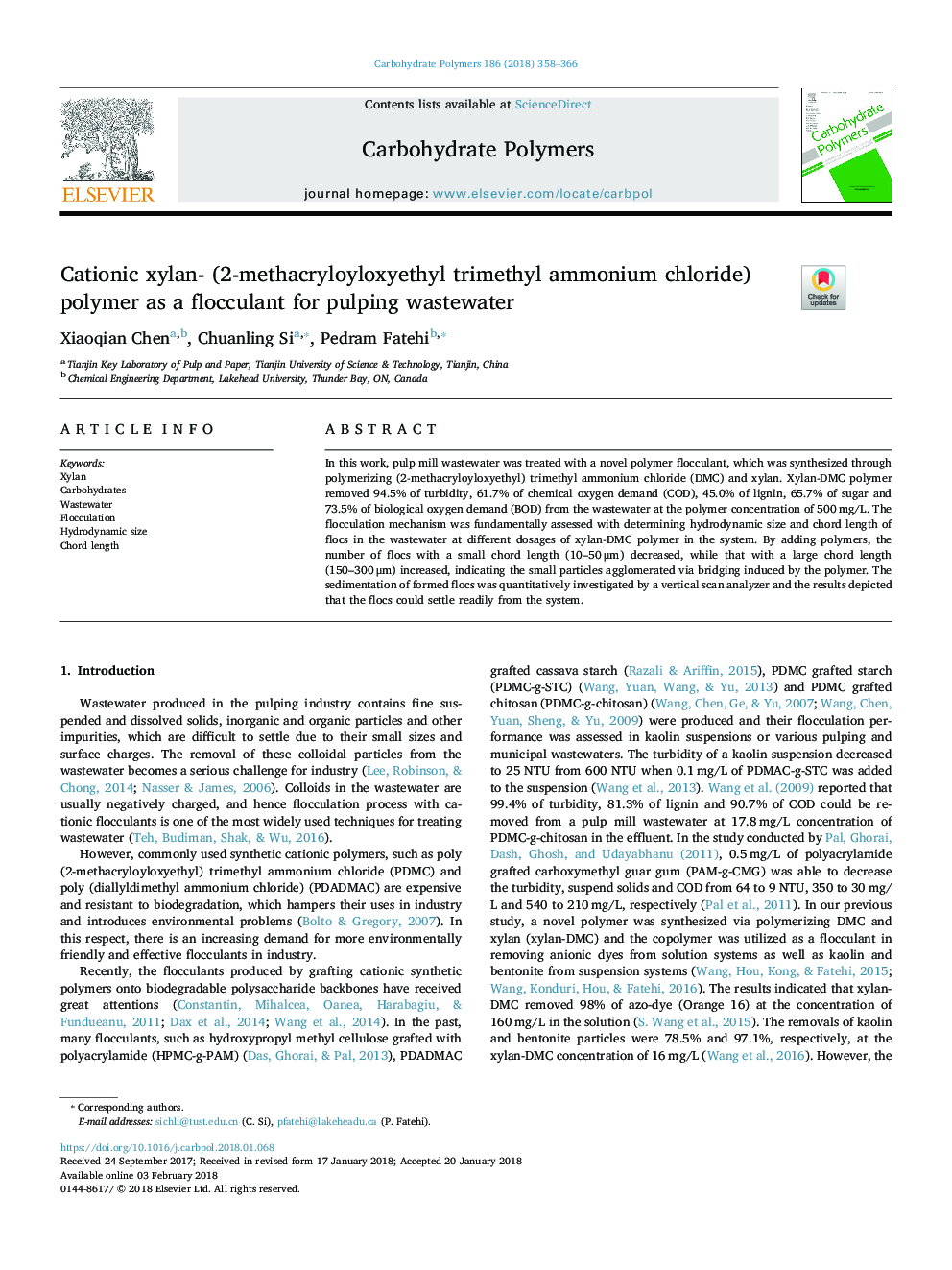| Article ID | Journal | Published Year | Pages | File Type |
|---|---|---|---|---|
| 7783670 | Carbohydrate Polymers | 2018 | 9 Pages |
Abstract
In this work, pulp mill wastewater was treated with a novel polymer flocculant, which was synthesized through polymerizing (2-methacryloyloxyethyl) trimethyl ammonium chloride (DMC) and xylan. Xylan-DMC polymer removed 94.5% of turbidity, 61.7% of chemical oxygen demand (COD), 45.0% of lignin, 65.7% of sugar and 73.5% of biological oxygen demand (BOD) from the wastewater at the polymer concentration of 500â¯mg/L. The flocculation mechanism was fundamentally assessed with determining hydrodynamic size and chord length of flocs in the wastewater at different dosages of xylan-DMC polymer in the system. By adding polymers, the number of flocs with a small chord length (10-50â¯Î¼m) decreased, while that with a large chord length (150-300â¯Î¼m) increased, indicating the small particles agglomerated via bridging induced by the polymer. The sedimentation of formed flocs was quantitatively investigated by a vertical scan analyzer and the results depicted that the flocs could settle readily from the system.
Related Topics
Physical Sciences and Engineering
Chemistry
Organic Chemistry
Authors
Xiaoqian Chen, Chuanling Si, Pedram Fatehi,
